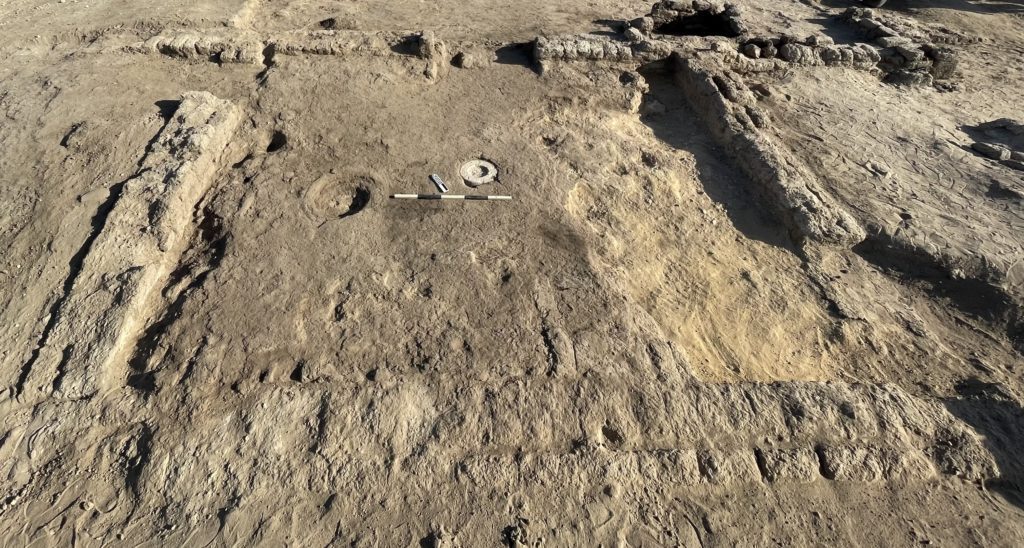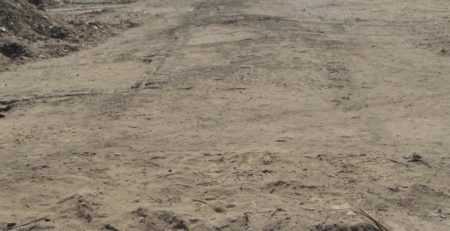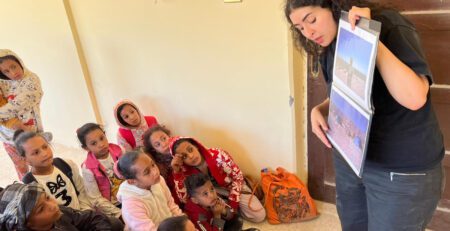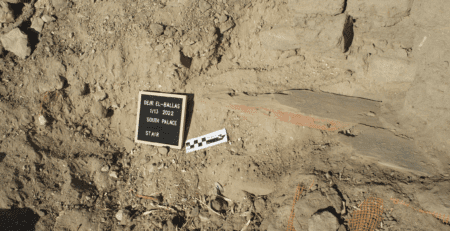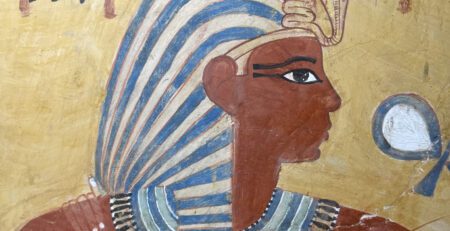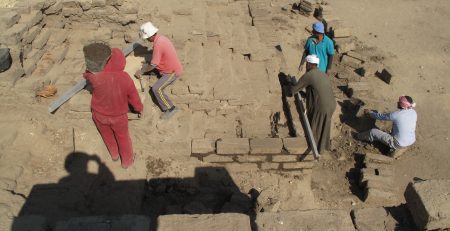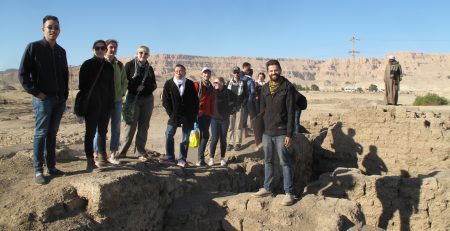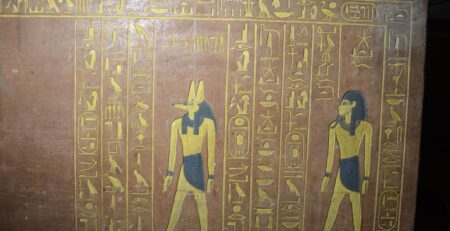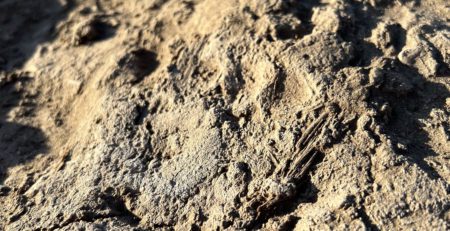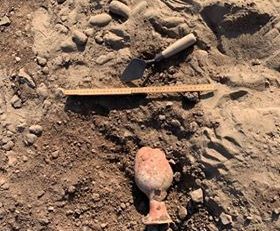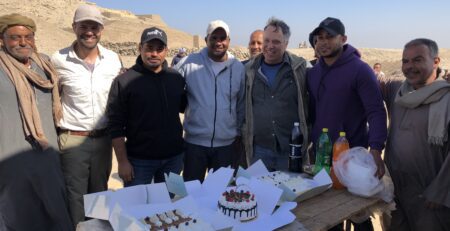Deir el-Ballas, 2022 Week 3: 1/22 – 1/27
At the end of Week 3, we are now halfway through our excavation season for 2022. Alhumdu-lilah our excavation work and conservation efforts at the site are progressing quite nicely and we are enjoying our work with our Egyptian colleagues from Qena and our local Egyptian teammates from Luxor and Ad-Deir Al-Gharbi.
In the North Suburb, Nicholas Brown continued his work at House E. This week, work focused on the excavation of Room W2- a room tentatively identified as a “corridor” in the middle of the house complex. Its exact relationship to the rest of the structure is unknown, and the function of this space is antiquity is unsure as well. Two small sample trenches were opened at the opening and end of the room in order to try to learn more about this enigmatic space.
At House F, Ellen Morris and Hassan Elzawy worked in Rooms 4 and 5. The incredible thing about this domestic space is even though the deposits of overlaying collapse and debris are shallow and not very deep, the preservation of the archaeological remains below is quite astonishing. A lot of in-situ pottery remains, and evidence of domestic activity like an oven installation were found throughout the course of the week. The Deir el-Ballas Expedition is excited to continue research at this exciting structure.
Finally, at the North Palace and “South Palace”, restoration efforts continued to consolidate and preserved the remaining mudbrick architecture. These were supervised by Sara Ahmed, who also lead a small team that conducted a surface clean to help uncover the foundations of more casemates for the North Palace structure.
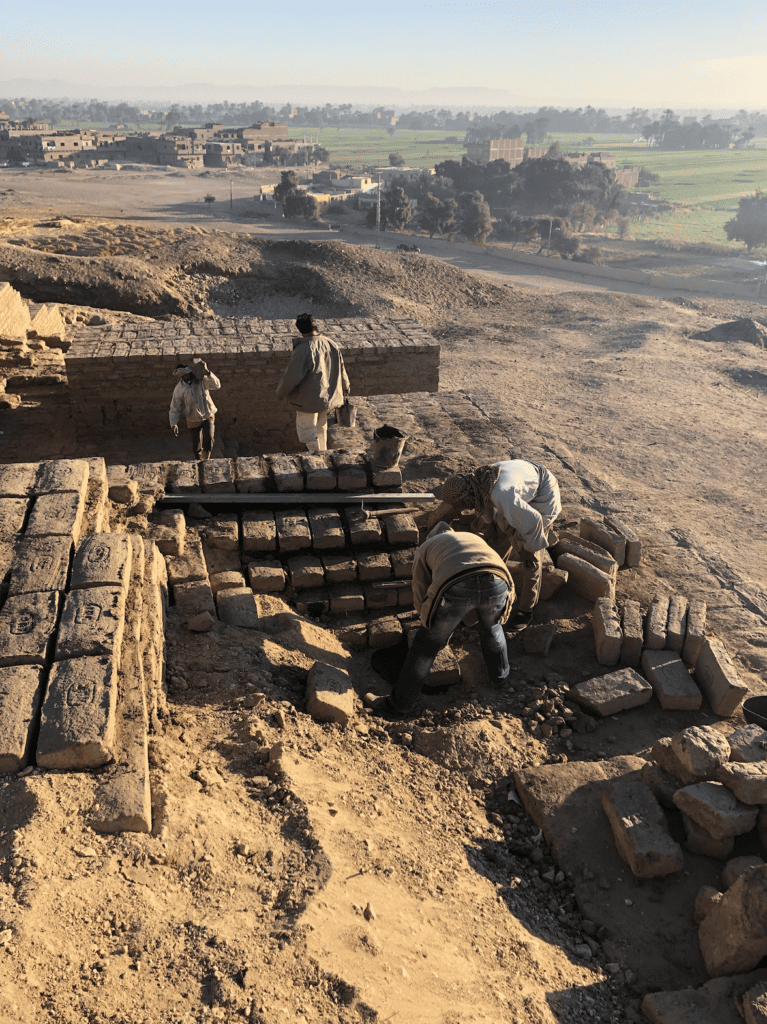
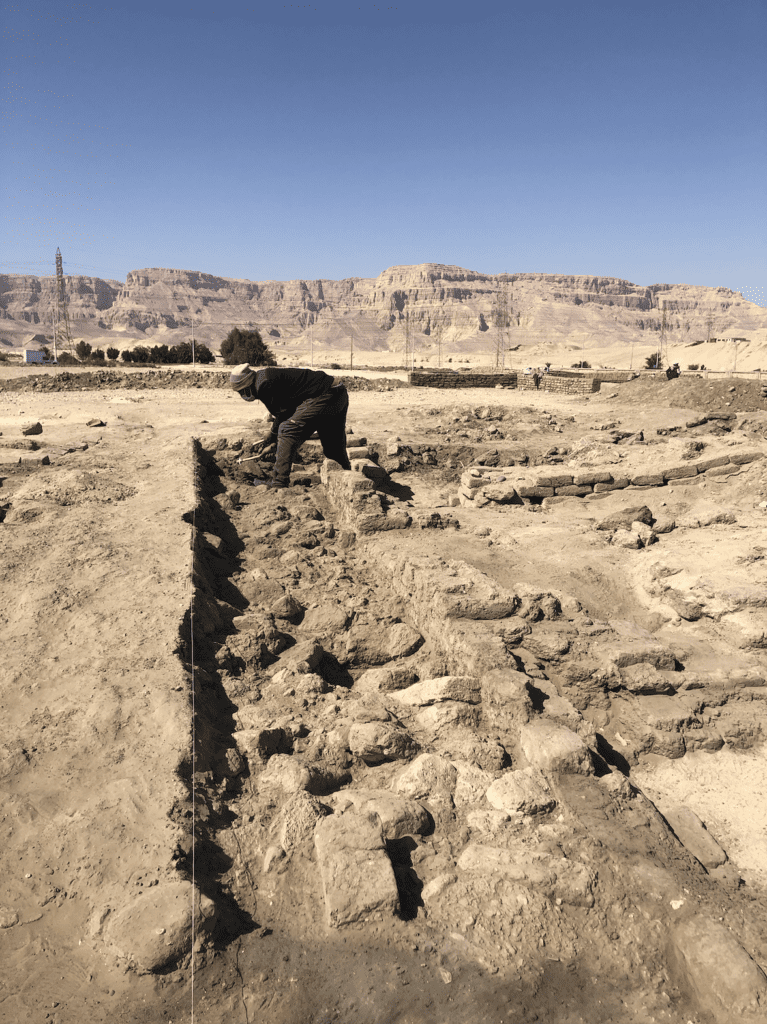
Deir el-Ballas, 2022, Week 3 Supplement
by Ellen Morris
House F
Given that the late Seventeenth Dynasty Theban rulers constructed Deir el-Ballas to serve as a campaign city, we were curious to expand our understanding of the site’s residential population. House F had been partially exposed in 2019 by a local tuktuk track. At that time our team excavated a small corner room and discovered 150 or so unbaked clay “eggs.” It seems that when the inhabitants needed to seal a jar (or a door or a document, etc.), they placed as many of these well-levigated clay blanks in water as would serve their purposes. Thus, we were curious as to whether the house was occupied by administrators or producers of some kind. So far, we are still uncertain. Although we have found a few “eggs” this year in the vicinity of Room 1, we have yet to find jar sealings or seal impressions anywhere in the house.
Sara Ahmed Aziz, and Hassan el-Zawy, and I, together with Raiyis Muhammed Ali and his team of experienced excavators — Faraj, Mansour, Abdu, Muhammed Yusef, and Abdullah — have now exposed the ground plan of this 14 x 10 m. structure. So far, we have focused on two rooms: a large northern courtyard and the main room accessed directly from it.
As seems to have been common at the site, the courtyard ran the length of the house and was oriented to catch the north breeze. An enigmatic clay circular structure to the east may well have served as a platform for a grinding implement, as food production often took place in courtyards. While we have yet to find an oven, Egyptian and Nubian cookpots were evidently in use. The latter, taken in conjunction with a sherd from a fine Kerma beaker, recovered from the main interior room, may perhaps suggest that certain Nubian allies of the Thebans maintained a permanent and privileged presence at the site. Numerous reconstructable storage jars and household pottery were discovered lying on the floor of the courtyard, including a “fish dish,” used to produce bread with a festive impression. A thin lens of chaffy excrement near a low trough strongly suggests that a cow had been kept in the courtyard to provide the family with dairy. So, too, craft production may have taken place. Flint tools were fashioned. So too, a metal needle suggests sewing activity, though it was too thin to have stitched the leather items that we discovered near the bin. It is tempting to suggest that it was utilized to produce high fashion, for our discovery of a beautiful combined curling tong and hair trimming tool suggests the inhabitants of House F were stylish!
